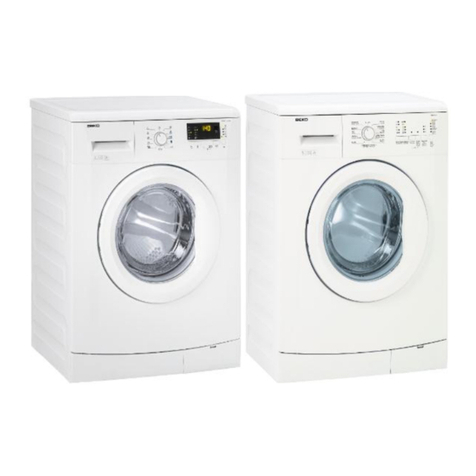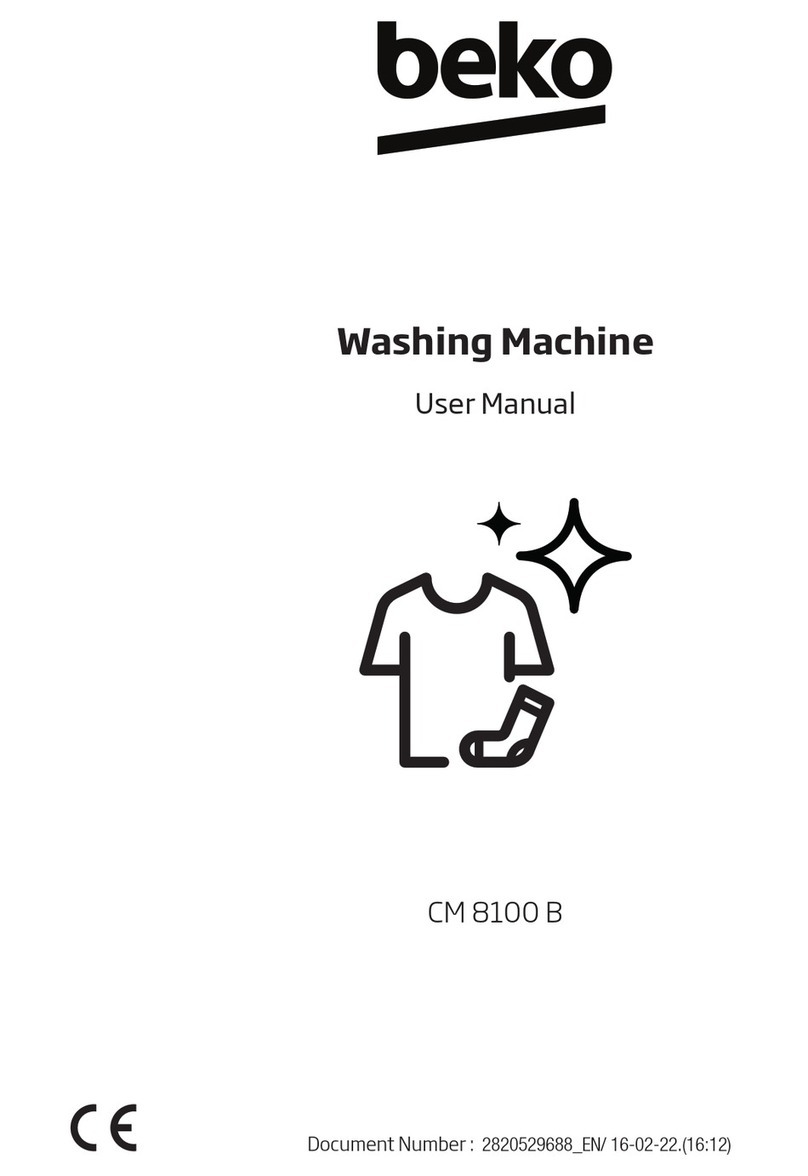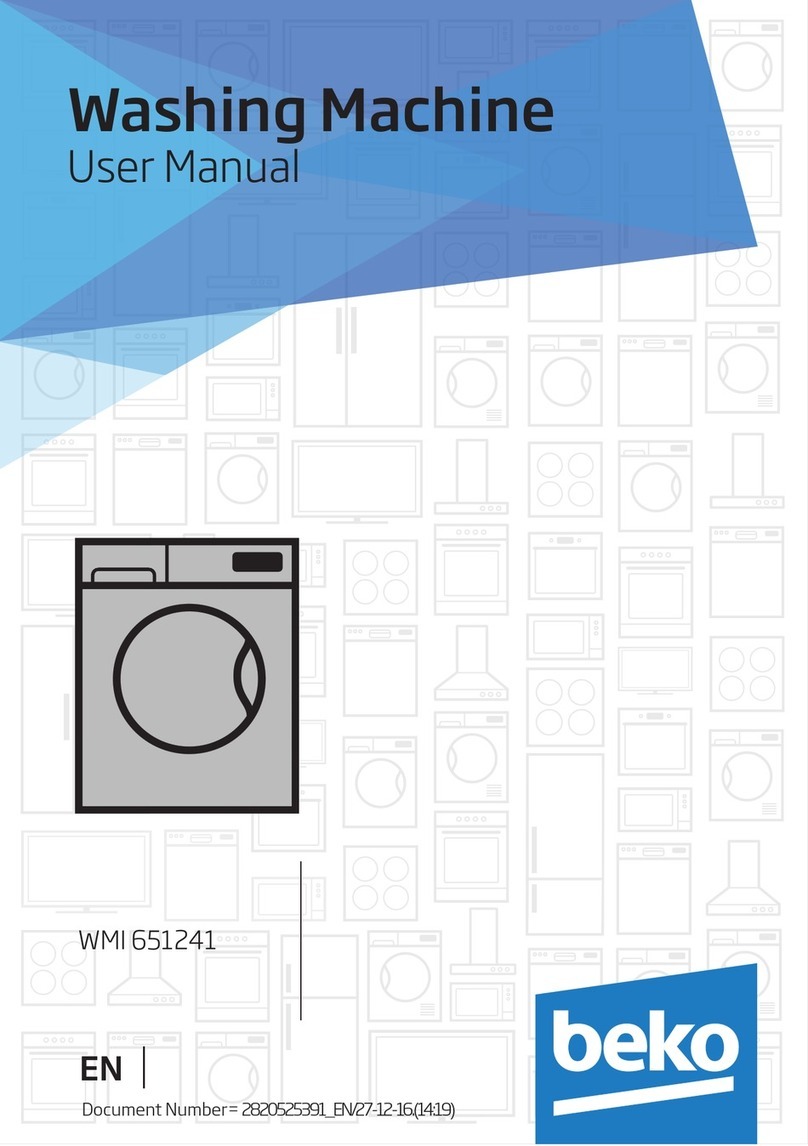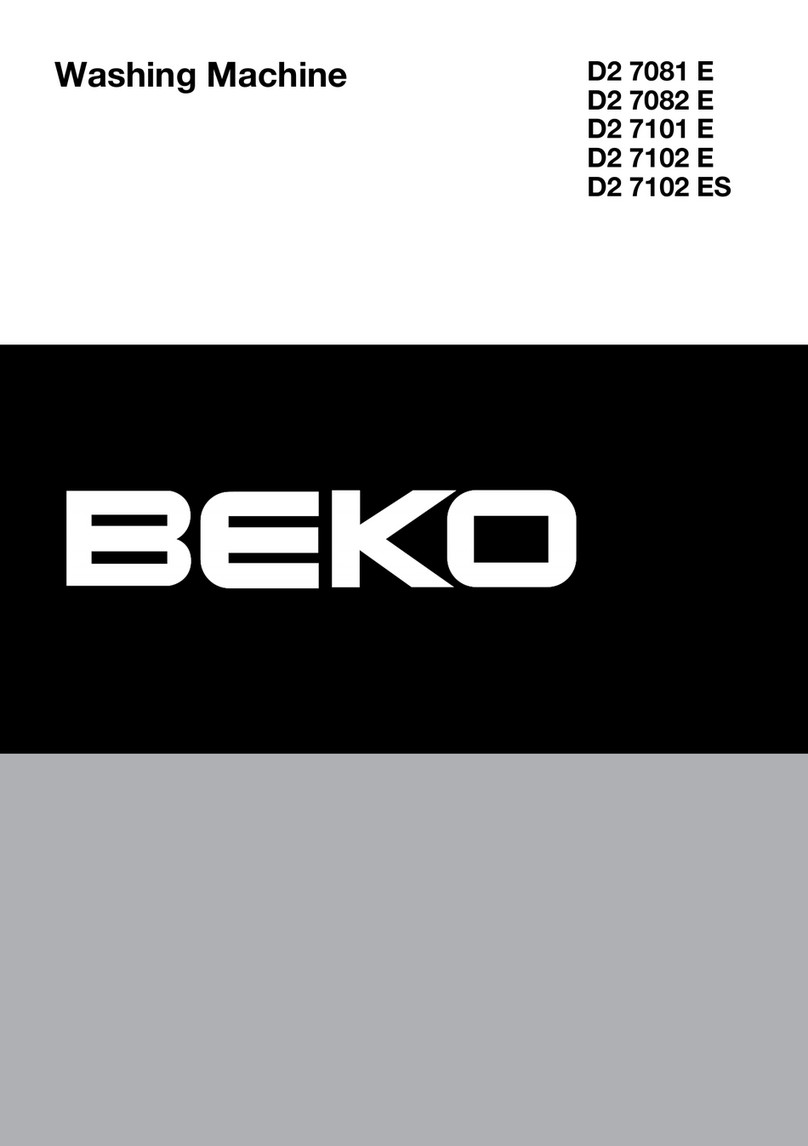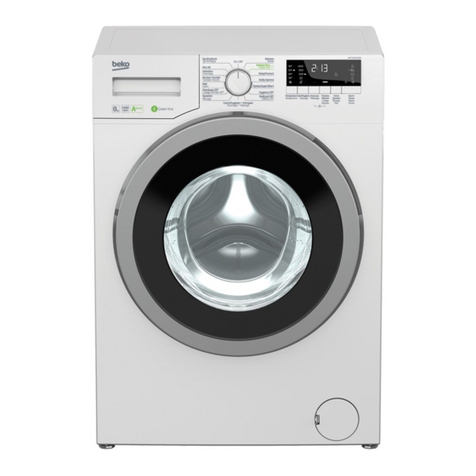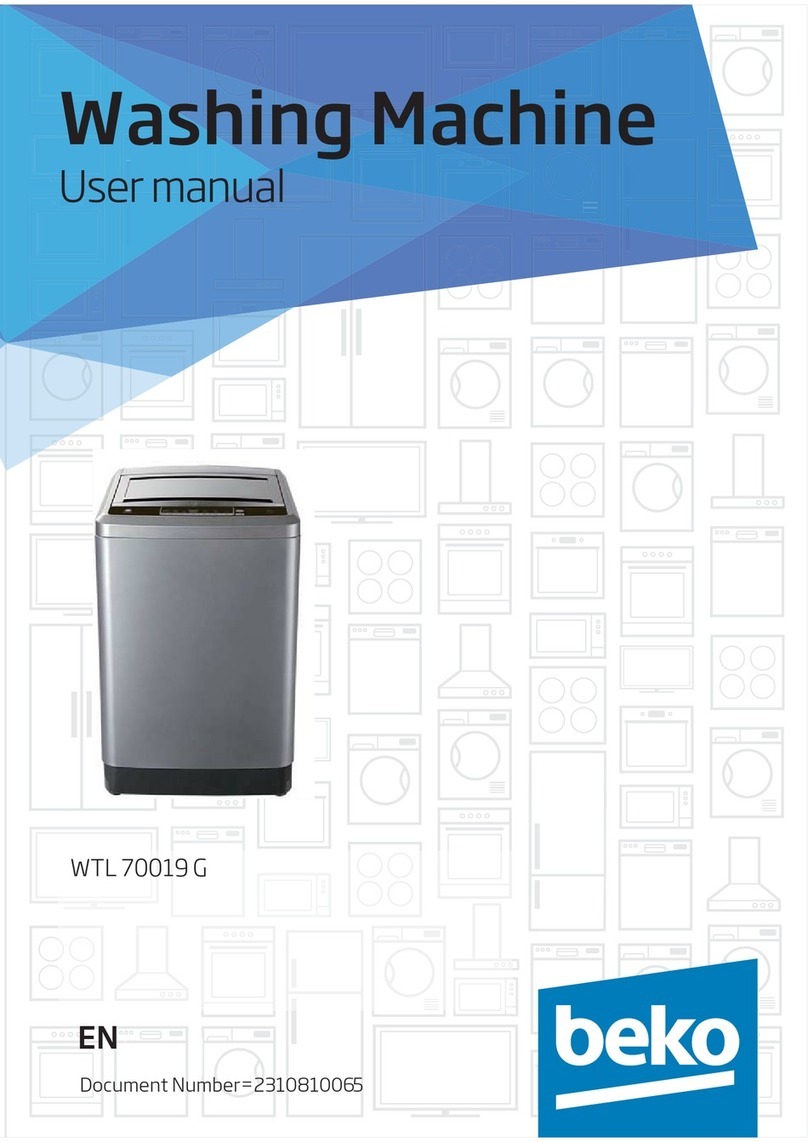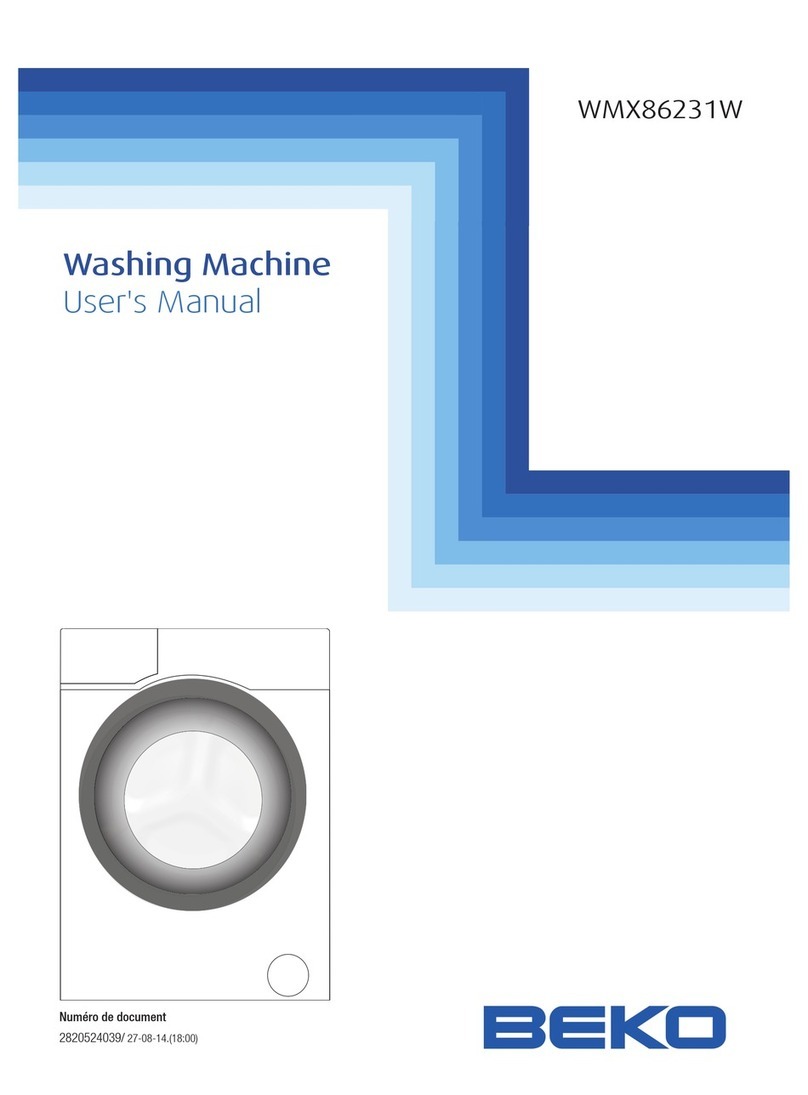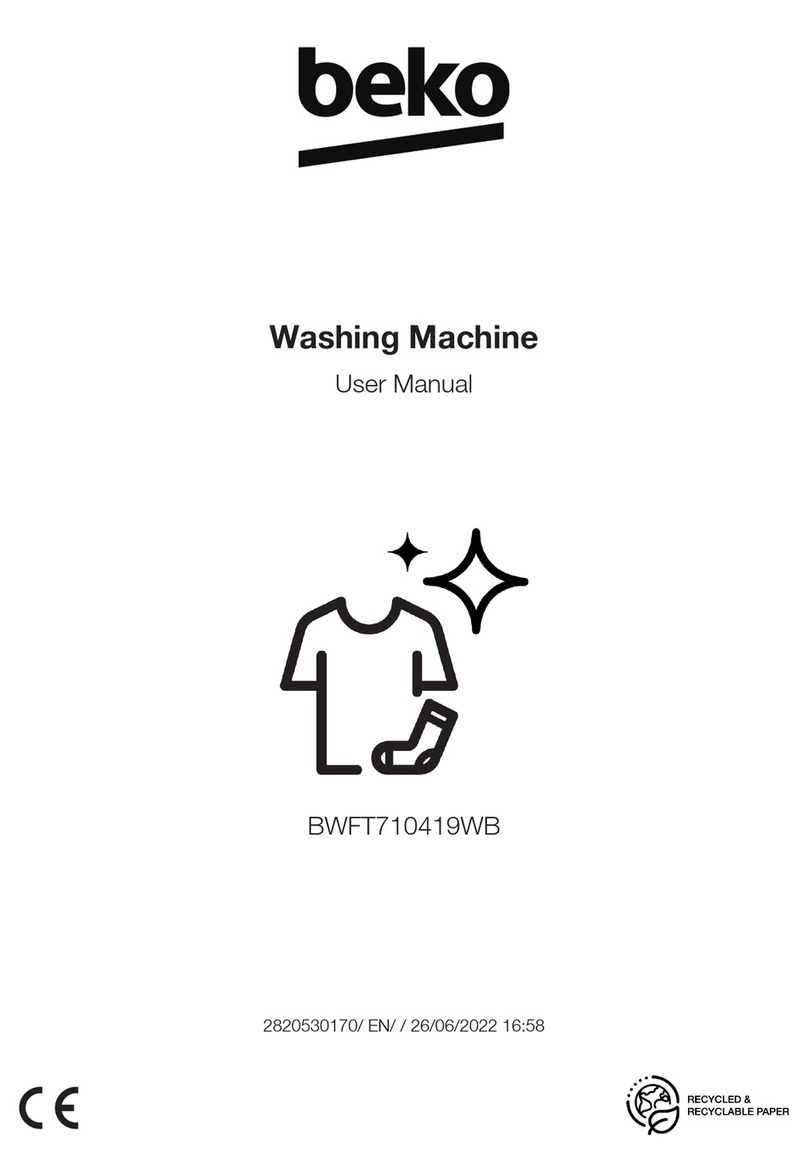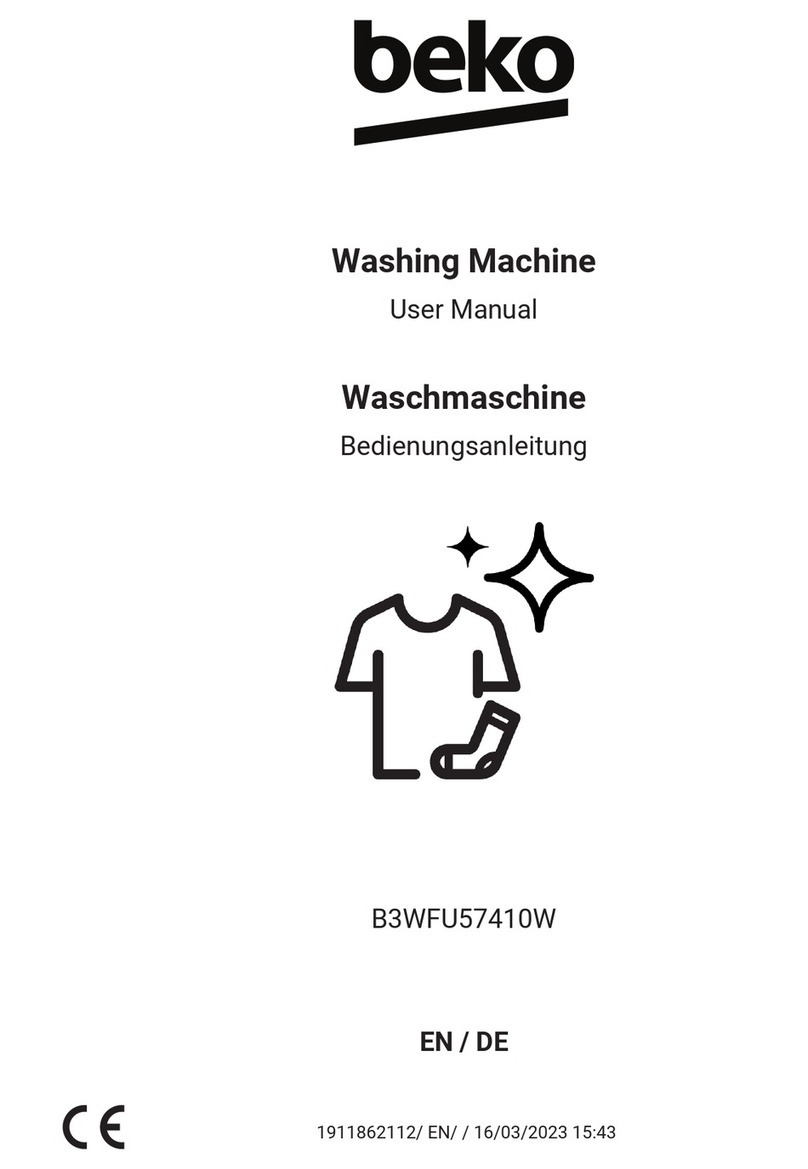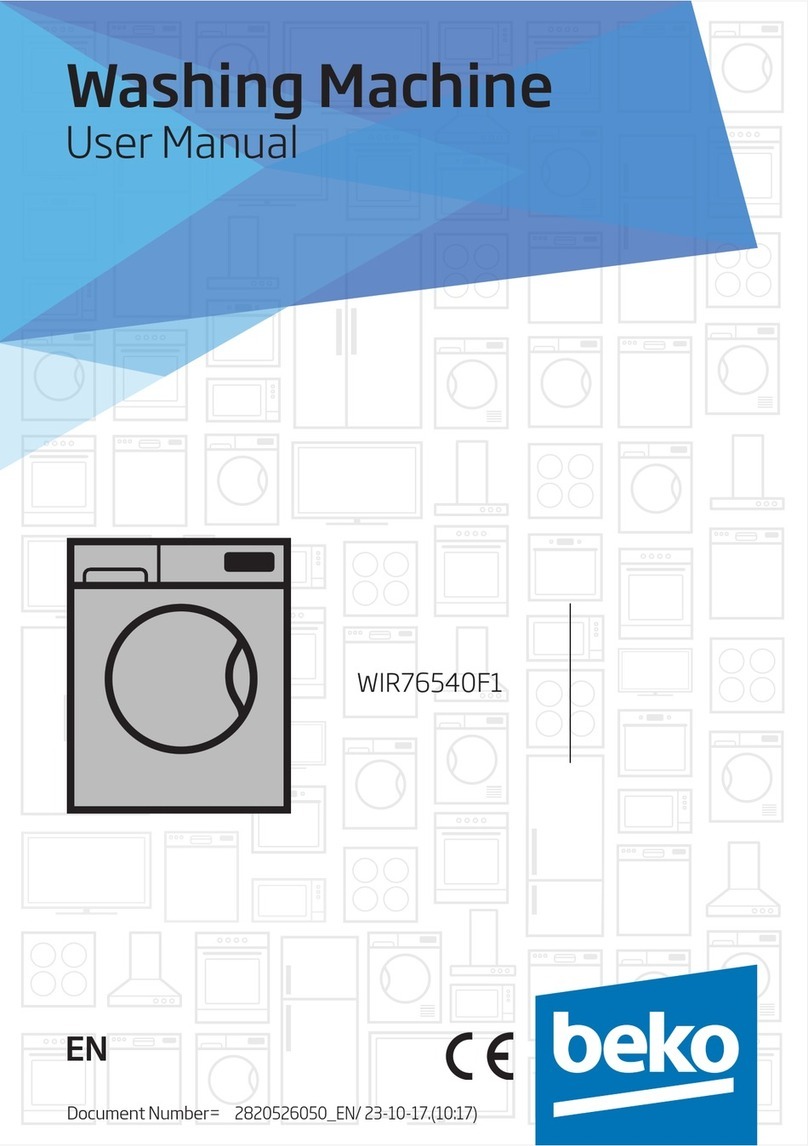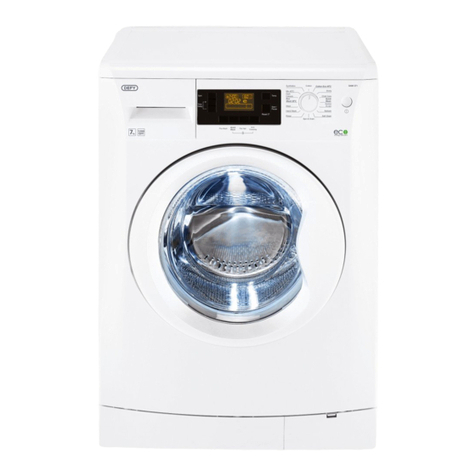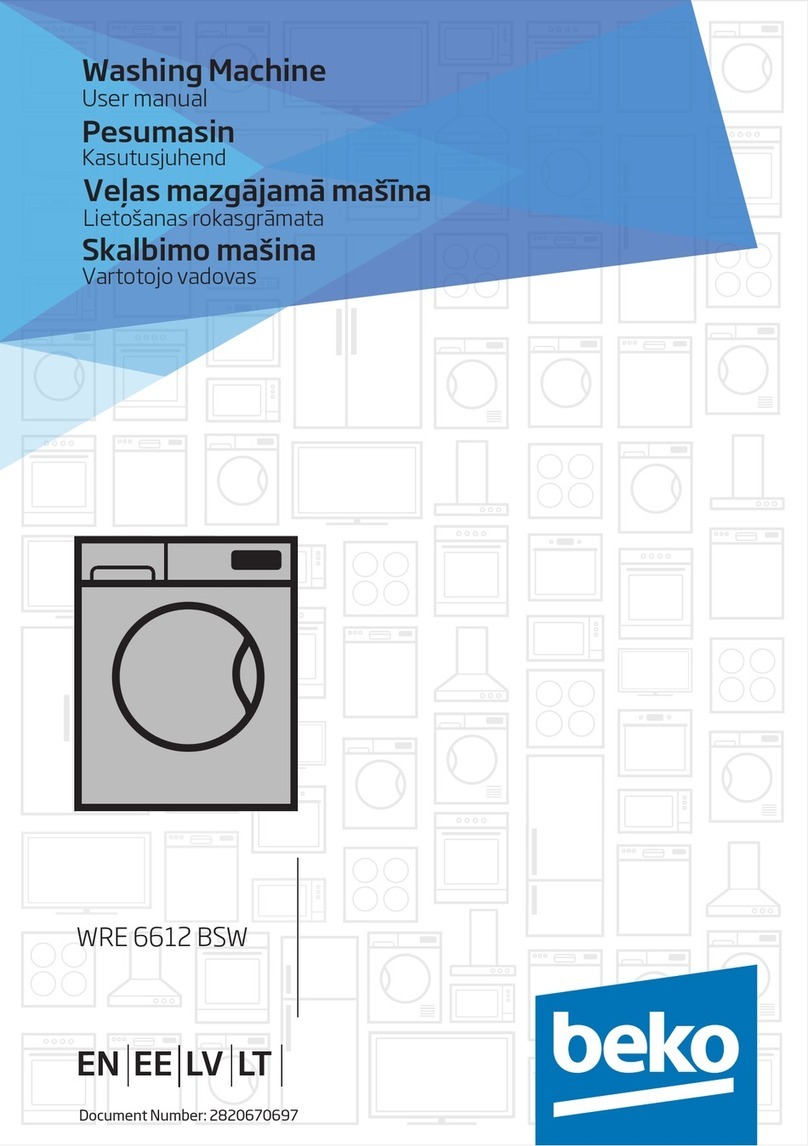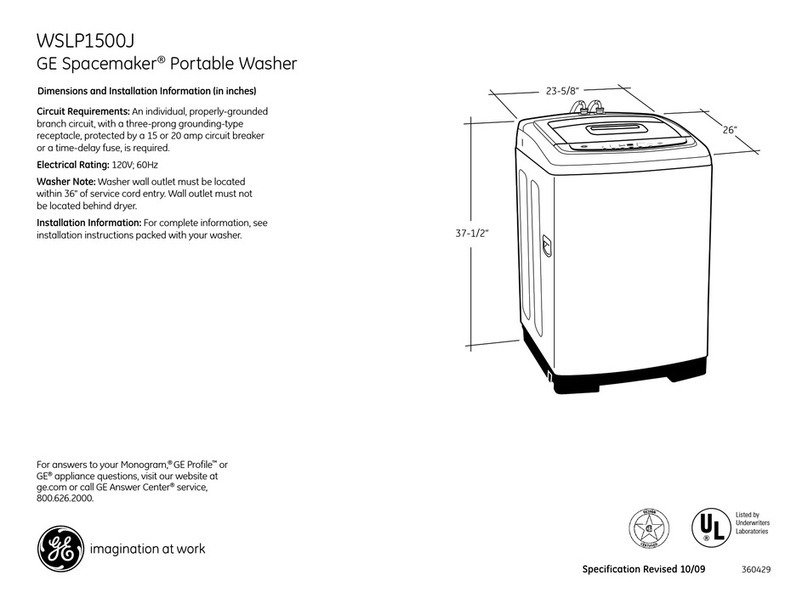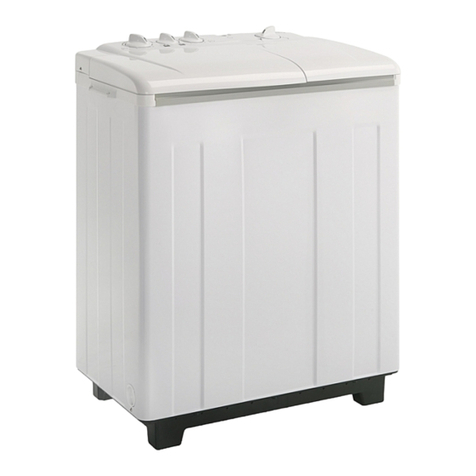
EN / 2
Table of Contents
1 Safety Instructions ........................ 4
1.1 Intended Use................................ 4
1.2 Safety of Children, Vulnerable Per-
sons and Pets ..............................
4
1.3 Electrical Safety ............................ 5
1.4 Handling Safety ............................ 6
1.5 Installation Safety.......................... 6
1.6 Operational Safety ........................ 8
1.7 Maintenance and Cleaning Safety. 9
2 Important Instructions for Envir-
onment ...........................................
10
2.1 Compliance with WEEE Directive.. 10
2.2 Package Information..................... 10
3 Technical Specifications .............. 11
4 Installation ..................................... 12
4.1 Appropriate Installation Location... 12
4.2 Assembly of Bottom Panel Covers 12
4.3 Removing Transportation Safety
Bolts.............................................
13
4.4 Connecting to Water Supply......... 13
4.5 Connecting the Drain Hose to the
Drain.............................................
14
4.6 Adjusting the Stands .................... 14
4.7 Electrical Connection .................... 14
4.8 Start Up........................................ 15
5 Preparation .................................... 15
5.1 Sorting the Laundry ...................... 15
5.2 Preparing Laundry for Washing..... 15
5.3 Tips for Energy and Water Saving. 16
5.4 Loading the Laundry..................... 16
5.5 Correct Load Capacity.................. 16
5.6 Using Detergent and Softener....... 16
5.7 Tips for Efficient Washing.............. 18
5.8 Displayed Programme Duration .... 19
6 Operating the Product .................. 19
6.1 Control Panel................................ 20
6.2 Symbols on the Display ................ 21
6.3 Programme and Consumption
Table ............................................
22
6.4 Programme Selection ................... 23
6.5 Programmes................................. 24
6.6 Temperature Selection.................. 27
6.7 Spin Speed Selection ................... 27
6.8 Auxiliary Function Selection .......... 28
6.8.1 Auxiliary Functions...................... 28
6.8.2 Functions/Programmes Selec-
ted by Pressing the Function
Keys for 3 Seconds....................
29
6.9 End Time ....................................... 30
6.10 Starting the Programme................. 31
6.11 Loading Door Lock ........................ 31
6.12 Changing the Selections After Pro-
gramme has Started ......................
32
6.13 Cancelling the Programme............. 33
6.14 End of Programme......................... 33
6.15 HomeWhiz Feature and Remote
Control Function ............................
33
6.15.1 HomeWhiz Setup ....................... 34
6.15.2 Setting up a Washing Machine
Connected to Someone Else's
Account .....................................
35
6.15.3 Remote Control Function and
Using It.......................................
35
6.15.4 Troubleshooting ......................... 36
7 Maintenance and Cleaning............ 36
7.1 Cleaning the Detergent Drawer ...... 37
7.2 Cleaning the Loading Door and
the Drum........................................
37
7.3 Cleaning the Body and Control
Panel .............................................
37
7.4 Cleaning the Water Intake Filters .... 37
7.5 Draining Remaining Water and
Cleaning the Pump Filter ................
38
8 Troubleshooting ............................. 39
9 DISCLAIMER / WARNING .............. 43
